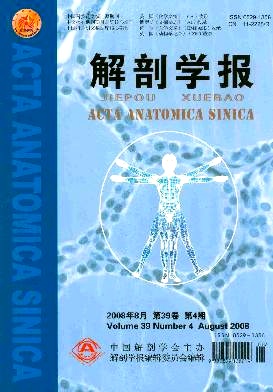|
|
Biological characteristics of human bone marrow mesenchymal stem cells and differentiation to neural precursor cells
2009, 40 (1):
98-102.
doi:
Objective To investigate biological characteristics of cultured human bone marrow mesenchymal stem cells (hMSCs) EM>in vitro/EM>, and differentiation potential to neural precursor cells (NPCs). Methods hMSCs were isolated with density gradient centrifugation and cell adhesion from adult bone marrow. The cell morphology, growth, surface markers were investigated, and osteogenic, chondrogenic, adipogenic differentiation potential were analyzed as well. At the 3 passage, hMSCs were expanded by embryonic stem cell maintenance medium, then these cells were exposed to neural induction medium, that contained 5-aza-2-deoxycytidine (5azadc) and Trichostatin A (TSA). After 7 days, half of the samples were detected the markers for multipotent NPCs, Nestin and Sox2 by immunofluocence and RT-PCR. Further, another half of the samples were grown an additional week in Neurobasal/B-27,to observe to differentiate into neural phenotypes. Results For acquired hMSCs, the positive ratio of CD-29,CD-44 were all above 90%; The osteogenic, chondrogenic and adipogenic differentiation potential were detected obviously; hMSCs induced by 5azadc and TSA could be identified by the positive staining for Nestin and Sox2, RT-PCR assessment showed that the differentiated cells expressed Nestin and Sox2. And after 1 week in Neurobasal/B-27, hMSCs differentiated into NF-L immunopositive cells with similar neuronal morphology. Conclusion hMSCs can be cultured and expanded EM>in vitro/EM>; after treated with epigenetic modifiers agents in neural environment,
Related Articles |
Metrics
|


